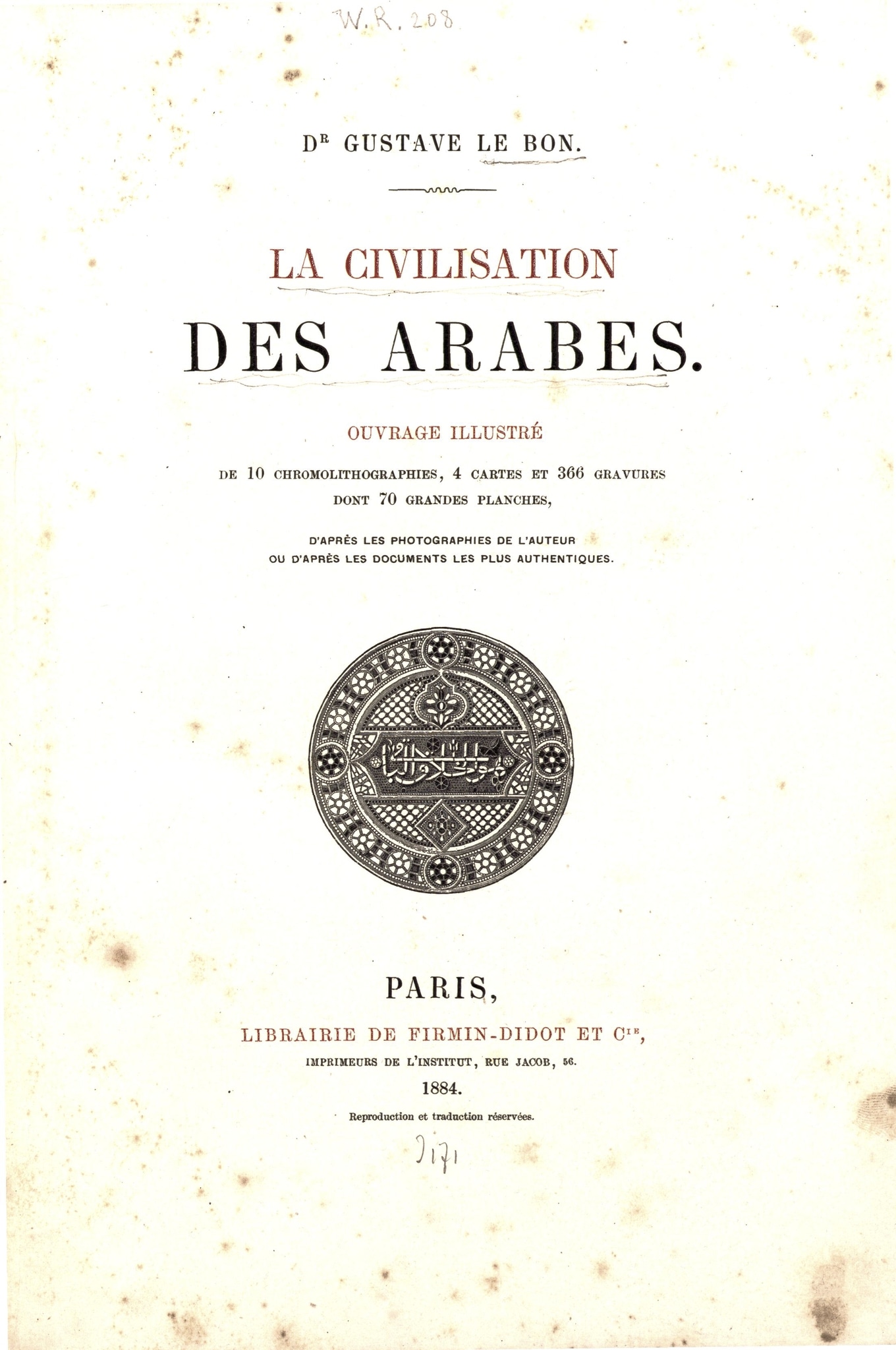La Civilisation des Arabes, published in 1884 in Paris by Firmin-Didot, is divided into six books and has 380 illustrations, 70 of which are large plates. The illustrations are reproductions of photographs by the author and from other sources.




La Civilisation des Arabes, published in 1884 in Paris by Firmin-Didot, is divided into six books and has 380 illustrations, 70 of which are large plates. The illustrations are reproductions of photographs by the author and from other sources.
Gustave Le Bon (1841–1931) arose from an anthropological interest in Arab art and culture. Although the majority of the 380 illustrations show architectural monuments and details, the text only deals with them summarily. As Mercedes Volait (2007, p. 205) has pointed out, Le Bon does not analyse art and architecture from an art-historical perspective, in order to determine chronological developments or formal innovations, for example, but rather documents them as historical testimonies that shed light on the traits of various cultures. His stylistic investigations thereby serve to solidify racial theories. The book received some positive as well as more critical reviews, but sales of the book were slow (see Volait, 2007, p. 109).
The illustrations in the book are largely Le Bon’s own photographs. Five illustrations show detailed views of stucco and glass windows. Three are photographs of windows from mosques in Cairo, one is a black and white drawing of a window of the Qasr al-ʿAzm in Damascus, and one is a coloured pictorial plate showing four large stucco and glass windows in the Al-Aqsa Mosque in Jerusalem.
Le Bon, G. (1884). La civilisation des Arabes. Paris: Firmin-Didot.
Volait, M. (2007). De l’anthropologie physique à “ l’ethnographie artistique ”: Gustave Le Bon et sa Civilisation des Arabes (1884). Histoire de l’art : bulletin d’information de l’Institut national d’histoire de l’art publié en collaboration avec l’Association des professeurs d’archéologie et d’histoire de l’art des universités, Somogy, 101–111.
Volait, M. (2009). Fous du Caire. Excentriques, architectes & amateurs d’art en égypte 1863–1914. L’Archange Minotaure.
18.5.2024–1.9.2024: Luminosité de l’Orient, Vitromusée Romont